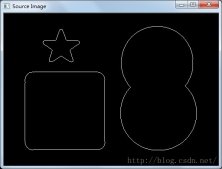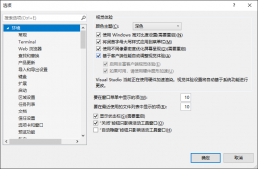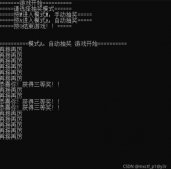平均背景法的基本思想是计算每个像素的平均值和标准差作为它的背景模型。
平均背景法使用四个OpenCV函数:
- cvAcc(),累积图像;
- cvAbsDiff() ,计算一定时间内的每帧图像只差;
- cvInRange(), 将图像分割成前景区域和背景区域;
- cvOr(), 将不同的彩色通道图像中合成为一个掩膜图像
代码:
|
1
2
3
4
5
6
7
8
9
10
11
12
13
14
15
16
17
18
19
20
21
22
23
24
25
26
27
28
29
30
31
32
33
34
35
36
37
38
39
40
41
42
43
44
45
46
47
48
49
50
51
52
53
54
55
56
57
58
59
60
61
62
63
64
65
66
67
68
69
70
71
72
73
74
75
76
77
78
79
80
81
82
83
84
85
86
87
88
89
90
91
92
93
94
95
96
97
98
99
100
101
102
103
104
105
106
107
108
109
110
111
112
113
114
115
116
117
118
119
120
121
122
123
124
125
126
127
128
129
130
131
132
133
134
135
136
137
138
139
140
141
142
143
144
145
146
147
148
149
150
151
152
153
154
155
156
157
158
159
160
161
162
163
164
165
166
167
168
169
170
171
172
173
174
175
176
177
178
179
180
181
182
183
184
185
186
187
188
189
190
191
192
193
194
195
196
197
198
199
200
201
202
203
204
205
|
/*平均背景法*/ #include "highgui.h"#include "cv.h"#include<stdlib.h>#include<stdio.h> //为不同的临时指针图像和统计属性创建指针 //Float, 3-channel imagesIplImage* IavgF, * IdiffF, * IprevF, * IhiF, *IlowF; IplImage* Iscratch, *Iscratch2; //Float 1-channel images IplImage* Igray1, * Igray2, * Igray3;IplImage* Ilow1, * Ilow2, * Ilow3;IplImage* Ihi1, *Ihi2, * Ihi3; //Byte, 1-channel imageIplImage* Imask;IplImage* Imaskt; //Counts number of images learned for averaging later.float Icount; // 创建一个函数来给需要的所有临时图像分配内存//为了方便,我们传递一幅图像(来自视频)作为大小参考来分配临时图像 void AllocateImages(IplImage* I){ CvSize sz = cvGetSize(I); IavgF = cvCreateImage(sz, IPL_DEPTH_32F, 3); IdiffF = cvCreateImage(sz, IPL_DEPTH_32F,3); IprevF = cvCreateImage(sz, IPL_DEPTH_32F,3); IhiF = cvCreateImage(sz, IPL_DEPTH_32F, 3); IlowF = cvCreateImage(sz, IPL_DEPTH_32F,3); Ilow1 = cvCreateImage(sz, IPL_DEPTH_32F,1); Ilow2 = cvCreateImage(sz, IPL_DEPTH_32F,1); Ilow3 = cvCreateImage(sz, IPL_DEPTH_32F,1); Ihi1 = cvCreateImage(sz, IPL_DEPTH_32F,1); Ihi2 = cvCreateImage(sz, IPL_DEPTH_32F,1); Ihi3 = cvCreateImage(sz, IPL_DEPTH_32F,1); cvZero(IavgF); cvZero(IdiffF); cvZero(IprevF); cvZero(IhiF); cvZero(IlowF); Icount = 0.00001; Iscratch = cvCreateImage(sz, IPL_DEPTH_32F,3); Iscratch2 = cvCreateImage(sz, IPL_DEPTH_32F,3); Igray1 = cvCreateImage(sz, IPL_DEPTH_32F,1); Igray2 = cvCreateImage(sz, IPL_DEPTH_32F,1); Igray3 = cvCreateImage(sz, IPL_DEPTH_32F,1); Imask = cvCreateImage(sz, IPL_DEPTH_8U, 1); Imaskt = cvCreateImage(sz, IPL_DEPTH_8U,1); cvZero(Iscratch); cvZero(Iscratch2);} //学习累积背景图像和每一帧图像差值的绝对值// Learn the background statistics for one more frame// I is a color sample of the background, 3-channel, 8uvoid accumulateBackground(IplImage *I){ static int first = 1; cvCvtScale(I, Iscratch, 1, 0); if(!first) { cvAcc(Iscratch,IavgF); cvAbsDiff(Iscratch, IprevF, Iscratch2); cvAcc(Iscratch2,IdiffF); Icount += 1.0; } first = 0; cvCopy(Iscratch, IprevF);} //setHighThreshold和setLowThreshold都是基于每一帧图像平均绝对差设置阈值的有效函数void setHighThreshold(float scale){ cvConvertScale(IdiffF, Iscratch, scale); cvAdd(Iscratch, IavgF, IhiF); cvSplit(IhiF, Ihi1, Ihi2, Ihi3, 0);}void setLowThreshold(float scale){ cvConvertScale(IdiffF, Iscratch, scale); cvSub(IavgF, Iscratch, IlowF); cvSplit(IlowF, Ilow1, Ilow2, Ilow3, 0);} //当积累了足够多的帧图像之后,就将其转化为一个背景的统计模型//计算每一个像素的均值和方差观测void createModelsfromStats(){ cvConvertScale(IavgF, IavgF, (double)(1.0/Icount)); cvConvertScale(IdiffF, IdiffF, (double)(1.0/Icount)); //Make sure diff is always something cvAddS(IdiffF, cvScalar(1.0, 1.0, 1.0), IdiffF); setHighThreshold(7.0); setLowThreshold(6.0);} //有了背景模型,同时给出了高,低阈值,就能用它将图像分割为前景和背景// Create a binary: 0,255 mask where 255 means foregrond pixel// I Input image, 3-channel, 8u//Imask void backgroundDiff(IplImage* I){ cvCvtScale(I, Iscratch, 1, 0); cvSplit(Iscratch, Igray1, Igray2, Igray3, 0); //Channel 1 cvInRange(Igray1, Ilow1, Ihi1, Imask); //Channel 2 cvInRange(Igray2, Ilow2, Ihi2, Imaskt); cvOr(Imask, Imaskt, Imask); //Channel 3 cvInRange(Igray3, Ilow3, Ihi3, Imaskt); cvOr(Imask, Imaskt, Imask); //Finally, invert the result cvSubRS(Imask, cvScalar(255), Imask);} //完成背景建模后, 释放内存void DeallocateImage(){ cvReleaseImage(&IavgF); cvReleaseImage(&IdiffF); cvReleaseImage(&IprevF); cvReleaseImage(&IhiF); cvReleaseImage(&IlowF); cvReleaseImage(&Ilow1); cvReleaseImage(&Ilow2); cvReleaseImage(&Ilow3); cvReleaseImage(&Iscratch); cvReleaseImage(&Iscratch2); cvReleaseImage(&Igray1); cvReleaseImage(&Igray2); cvReleaseImage(&Igray3); cvReleaseImage(&Imaskt);} //主函数int main(){ CvCapture* capture = cvCreateFileCapture("tree.avi"); if(!capture) { return -1; } cvNamedWindow("win1"); cvNamedWindow("win2"); IplImage* rawImage = cvQueryFrame(capture); cvShowImage("win1", rawImage); AllocateImages(rawImage); int i = 0; while(1) { if(i <= 30) { accumulateBackground(rawImage); if(i == 30) { createModelsfromStats(); } } else { backgroundDiff(rawImage); } cvShowImage("win2", Imask); if(cvWaitKey(33) == 27) { break; } if(!(rawImage = cvQueryFrame(capture))) { break; } cvShowImage("win1", rawImage); if(i == 56 || i == 63) cvWaitKey(); i = i+1; } DeallocateImage(); return 0;} |
以上就是本文的全部内容,希望对大家的学习有所帮助,也希望大家多多支持服务器之家。
原文链接:https://blog.csdn.net/thystar/article/details/41279305














